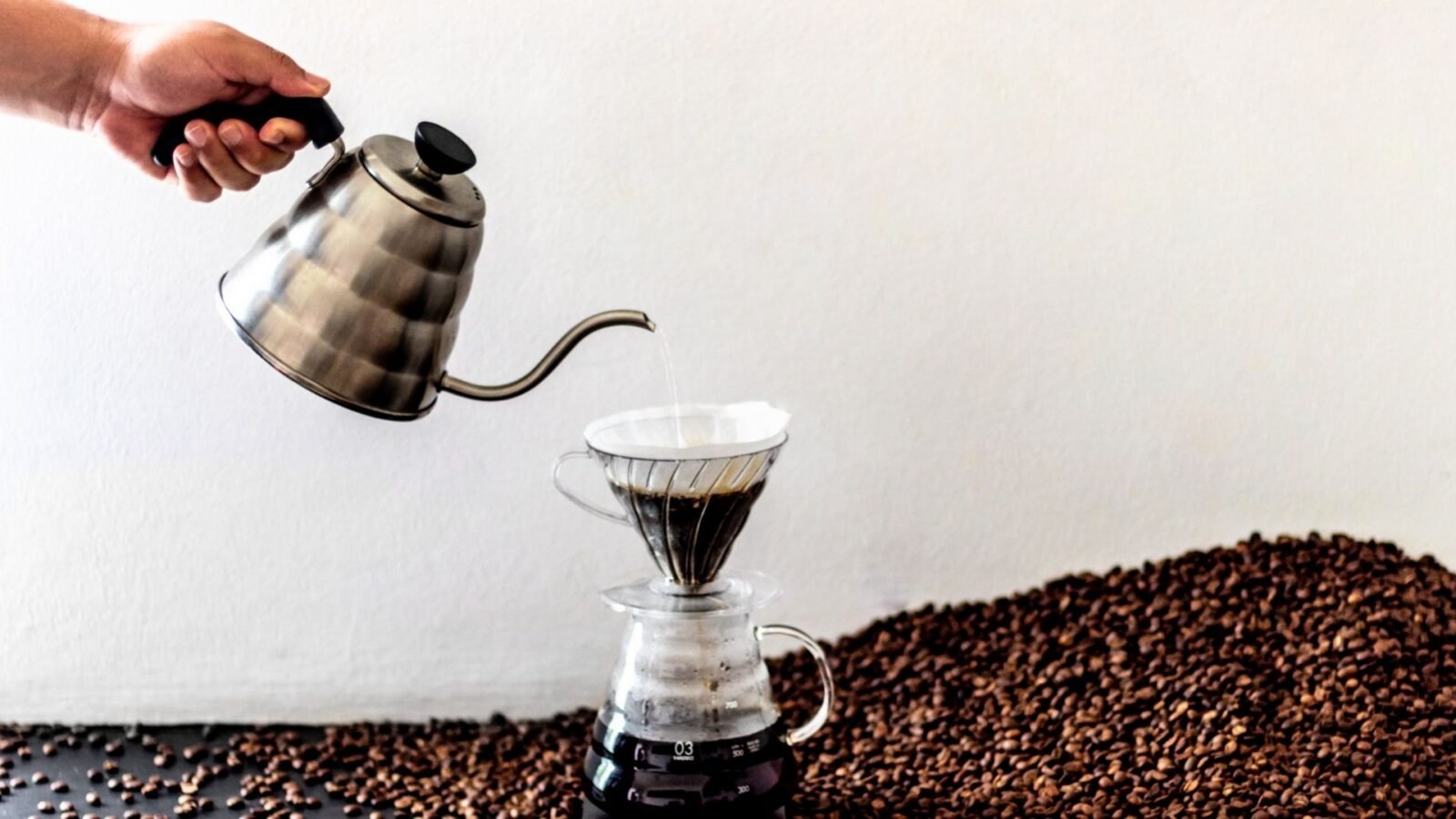Imagine brewing your morning coffee and, with the first whiff, catching hints of fresh apples, zesty lemons, and sweet florals. Intrigued? The secret behind this symphony of aromas lies in aerobic fermentation coffee — a simple, natural process that transforms coffee cherries into cups full of vibrant life.
In Indonesia’s lush highlands, farmers lay freshly harvested cherries in open tanks, inviting the air to work its magic. As natural microbes meet oxygen, they ignite a gentle fermentation that unlocks a stunning spectrum of flavors. How exactly does a little air turn a simple coffee cherry into an aromatic masterpiece? Let’s dive into the story.
What is Aerobic Fermentation in Coffee?
In the world of coffee processing, fermentation isn’t just a step — it’s a transformation. Fermentation happens when microorganisms like yeast and bacteria break down sugars and mucilage (the sticky layer) on the coffee cherry.
When oxygen joins the party, we call it aerobic fermentation. Here’s the breakdown:
- Aerobic fermentation (with oxygen): Fresh coffee cherries are left in open-air tanks or trays. Natural microbes consume the sugars, releasing acetic acid and alcohol. The result? A coffee profile that’s bright, clean, and crisp.
- Anaerobic fermentation (without oxygen): Cherries are sealed in airtight tanks, sometimes infused with CO₂. This method creates complex, winey flavors with a creamy body.
While anaerobic methods often grab headlines for their wild, fruity notes, aerobic fermentation quietly brings out a coffee’s true essence — pure, clean, and refreshingly fruity.
Want to know how fermentation types impact your cup? Explore the chemistry of coffee beans here.
How Aerobic Fermentation Works: A Simple, Natural Process
Aerobic fermentation doesn’t require fancy technology — just nature’s touch and a bit of patience. Here’s a quick guide:
- Harvest and Sort: Only ripe, red cherries are selected. Quality starts in the field.
- Open Tank Fermentation: Cherries are placed in open-air tanks or spread on patios.
- Natural Microbial Action: Oxygen allows native microbes to break down the mucilage.
- Time and Temperature Control: Fermentation typically lasts 12-48 hours, depending on the altitude and climate. Higher altitudes slow the process, while tropical lowlands speed it up.
- Monitoring: Farmers monitor aromas and temperature closely. A sweet, fruity scent signals that fermentation is peaking.
- Washing and Drying: Once optimal fermentation is achieved, cherries are washed and sun-dried to lock in those beautiful flavors.
In regions like Aceh and Toraja, many farmers still rely on this traditional, eco-friendly method. Curious about these iconic Indonesian coffee origins? Check out this guide to Aceh Gayo coffee.
What Aerobic Fermentation Does to Coffee Flavor
So what does this process bring to your cup?
- Bright Acidity: Expect lively notes of citrus and green apple. Think lemonade, but smoother.
- Fresh Fruit Aromas: Apples, pears, and berries are common, along with delicate florals like jasmine.
- Transparent Flavor: Aerobic fermentation lets the coffee’s origin and variety shine through.
- Light Body, Clean Finish: Perfect for pour-over lovers who crave clarity and balance.
Coffee professionals often describe aerobically fermented beans as “friendly” and “approachable”. If you’re someone who loves exploring different coffee styles, you’ll appreciate the subtle complexity this method offers.
Why Aerobic Fermentation Matters More Than Ever
With the specialty coffee world evolving fast, why should we care about this humble, oxygen-loving process?
- Simplicity Meets Quality: No sealed tanks, no expensive equipment — just air and careful timing.
- Eco-Friendly: Less water waste and simpler infrastructure make it sustainable.
- Authenticity: It preserves the coffee’s natural character, a quality prized in specialty coffee grading.
- Affordability: Because it requires fewer resources, aerobically fermented coffee often comes at a better price — a win for both producers and drinkers.
In short, aerobic fermentation is the heart of traditional craftsmanship with a modern twist. It gives us coffee that speaks clearly of its origin, without the heavy-handedness of experimental techniques.
Tips for Farmers and Home Brewers
Thinking about trying or brewing aerobic fermented coffee? Here are some practical tips:
- Use Open Containers: Allowing air circulation is key.
- Monitor Aromas, Not Just Time: Fermentation is ready when fruity, sweet scents emerge.
- Control Temperature: Keep it cool and shaded if you’re in a hot climate.
- Gentle Stirring: Occasional stirring ensures even fermentation.
For home brewers, seek out natural or honey-processed coffees, which often use aerobic fermentation. Want to take your brewing skills up a notch? Learn how to brew your Kopi Luwak right here.
Aerobic Fermentation: A Trend Making a Comeback

In today’s coffee scene, aerobic fermentation is being rediscovered by farmers and roasters who value clarity and balance.
- Hybrid Methods: Some producers start with aerobic fermentation and finish with anaerobic to combine brightness and complexity.
- Microbial Innovation: While most fermentation is spontaneous, a few roasters are adding select microbes for flavor targeting.
- Low-Impact Experimentation: Semi-aerobic carbonic maceration techniques are gaining ground, improving fruitiness without sacrificing cleanliness.
Indonesia, with its diverse coffee landscapes, is perfectly positioned to lead this movement. Curious about the broader coffee scene? Explore the Indonesian coffee industry.
Final Sip: A Return to Nature
Fermentasi aerobic coffee reminds us that sometimes, the simplest methods yield the richest rewards. By embracing air, patience, and nature’s own rhythms, we can enjoy coffees that sparkle with life and authenticity.
Next time you sip your brew, ask yourself: is this coffee telling the story of the air and earth where it was born? Maybe it’s time to let the breeze guide your next cup.
Looking for more ways to experience coffee’s vivid flavors? Discover the exquisite aroma of Indonesian coffee here.








